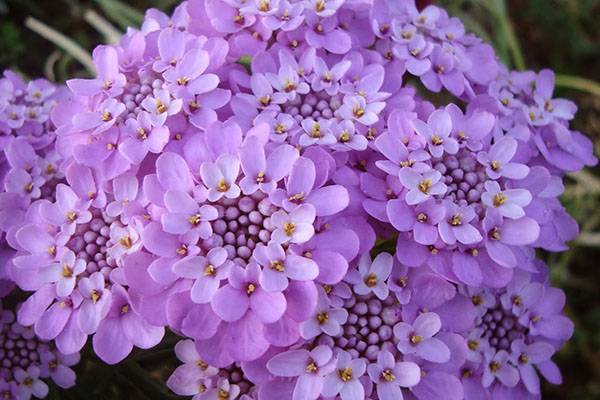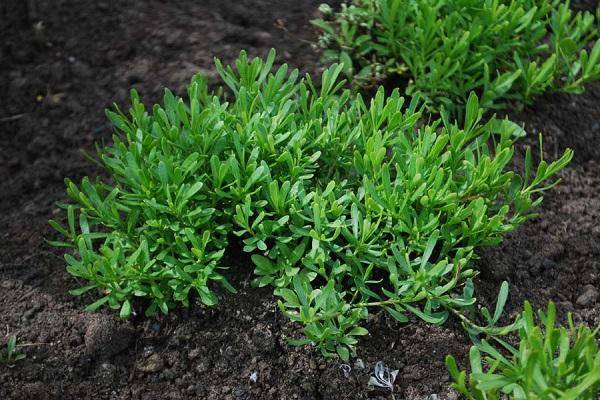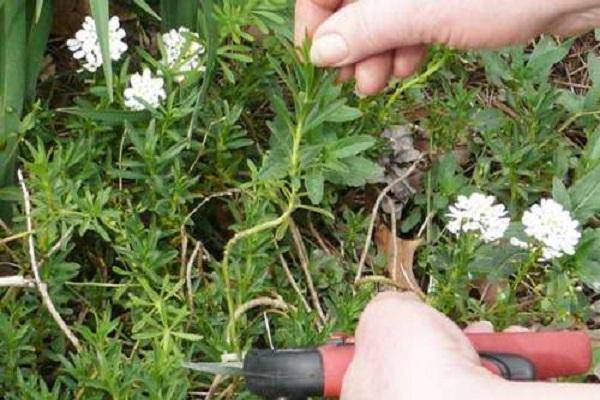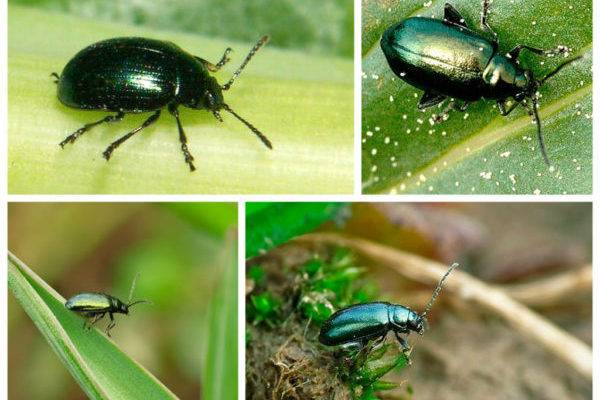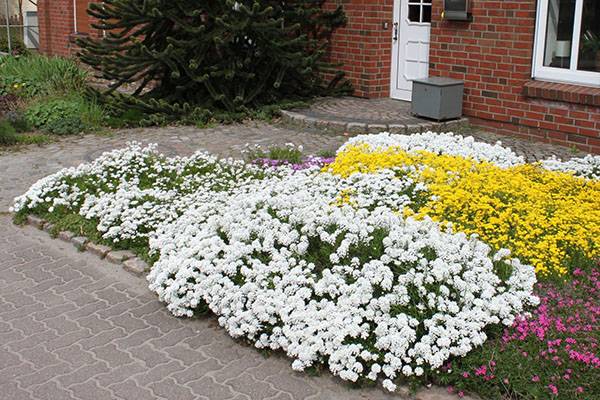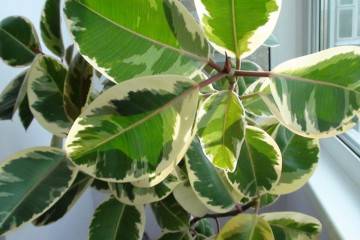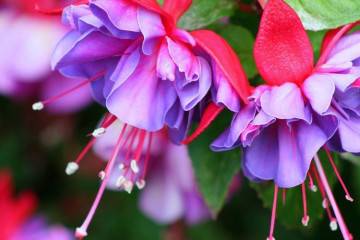Perennial Iberis flower - cultivation and care
Content:
Perennial Iberis is an unusual shrub, representative of the Cabbage family. The plant has about 40 varieties. It is used in landscape design, great for decorating a backyard. If you wish, you can grow bushes of extraordinary beauty, which will decorate not only the local area, but also street flower beds.
Description of Iberis: varieties and varieties
The culture is represented by both perennial and annual shrubs. Gardeners prefer the following types of cultivation:
- gibraltar. Wide, up to half a meter in diameter, shrubs are decorated with narrow evergreen foliage. Flowers of a light pink shade of small size change color to white over time. Even in a harsh climate, the Gibraltarian blooms twice a season. The bushes grow up to 20 cm, Candytaft and Candy Tuff are considered the most popular varieties of this Iberis. In the latter, large lilac inflorescences resemble dahlias;
- Iberis evergreen has tough leathery foliage with a bright malachite color. Globular bushes grow up to 40 cm, white umbellate inflorescences adorn the flower bed for a month. Ripe buds produce a lot of seed material with good germination. The shrub is unpretentious to the soil, but prefers sandy or stony soil. Famous varieties include Fidel, Snowflake, Little Jam, Iberis evergreen Whiteworth;
- Crimean - dwarf perennial, not exceeding 7 cm in height, which can be planted anywhere. In winter, it needs a special shelter due to poor frost tolerance. Decorated with dense green foliage resembling shoulder blades. Purple buds after final ripening become a snow-white shade. Crimean blooms in April days;
- rocky grows up to 13 cm, shrubs are voluminous and dense. During the flowering period, they resemble a spruce sprinkled with snow. Buds with a cream or pinkish color, stay on the bushes for a little more than a month. Popular varieties include Pygmaea and Hyacintenblutige Riesen.
Iberis planting site and soil
Iberis can be planted both in open ground and in a regular pot. Plants prefer sunny areas with good drainage. Inexperienced gardeners are interested in whether it is possible to grow from Iberis seeds and when to plant seedlings. The answer is simple - perhaps, but as the earth warms up.
Iberis: growing from seed, when to plant
Planting in open ground is carried out from the third week of April after the end of the spring frost. The soil should warm up to 10 ° C. If the indicators are lower, then the planting of Iberis is postponed at the end of the month.
Shrubs prefer loamy or stony soil with sufficient light and constant drainage, as excess moisture can lead to rotting of the root system and the death of the crop. Planting works are carried out according to the algorithm:
- Wells are prepared 10 cm deep, observing an interval of 12 to 15 cm. This condition is associated with the ability of the plant to grow on fertile soil.
- The seeds are evenly distributed over the hole.
- Lightly covered with earth. Deep landings are contraindicated.
- The sand is moistened as needed.
Different types of plants should be planted at a decent distance from each other, as the bushes are capable of self-pollinating. After the appearance of the first shoots, thinning is necessarily carried out, as a result, a distance of 20 to 25 cm should remain between the bushes.
Planting Iberis seedlings
Planting seed in pre-prepared containers is best done in mid-March. Preference should be given to a sand-peat mixture and shallow pots. Planting seedlings is carried out according to the standard scheme:
- The finished soil mixture is laid out in boxes. If self-made soil is taken, then it is pre-steamed and loosened.
- Seed material is evenly distributed over the surface and pressed in 1-2 mm.
- Sprinkle on top with a small amount of clean river sand.
- The containers are covered with plastic wrap or glass.
- They are sent to a warm room with normal lighting and a stable temperature regime of 15-18 ° C.
- Crops are regularly ventilated and sprayed with water from a spray bottle.
- Seedlings of the first shoots are expected within a calendar month.
After the emergence of sprouts, the shelter is removed and they begin to harden, periodically taking them out into the fresh air.
In open ground, the bushes are sent no earlier than they grow up to 7 cm.This will happen in mid-late May. Seedlings are transplanted with maximum care at a distance of 12 to 15 cm from each other. Particular attention is paid to the root system, as it is easily damaged in young plants. After the end of planting work, the soil around the seedlings is compacted and slightly moistened.
Watering and loosening the soil
Shrubs need regular but moderate watering throughout the spring and summer. In hot and dry weather, watering increases proportionally. If there are no problems with precipitation in the region, then there is no need to water the plant.
Loosening of the soil is carried out as the irrigation measures. At the same time, it is necessary to remove weeds, which emerge faster under favorable conditions than cultivated plants.
Iberis breeding methods
There are several options for obtaining shrubs other than growing from seeds. Common breeding methods include:
- grafting. After the end of flowering, small cuttings, from 5 to 8 cm, are cut from the shoots. They are soaked in a root stimulator and planted in moist soil. The planting sites are covered with glass containers, in winter, the containers are additionally insulated with foliage, sawdust, and covered with earth from above. After the end of the frost period, the containers are removed, young leaves should be present on the cuttings;
- division of the root. For the procedure, adults and lush plants over 5 years old are selected. In the spring before the growing season, the bushes are dug up.After cutting off the upper part, they are divided into equal parts in volume, which are planted in previously prepared places, the earth around is compacted and moistened.
Top dressing and transplanting Iberis
Plants do not need regular fertilization. If you want to get the most lush flowering in the summer months, the bushes are fed with complex solutions and dried buds are removed in a timely manner.
At the beginning of the growing season, fertilizing is carried out with mineral fertilizers - nitrophos, ammophos. After the autumn pruning of shrubs, the soil is fed with compost. It is impossible to overfeed the culture too, since oversaturation causes massive growth with the loss of its decorative appearance.
Iberis does not belong to those who like frequent transplants, the taproot dies off quickly if damaged, and the plant dies. The bushes are transplanted after five years, since at an older age the number of flowers decreases and they require rejuvenation.
Pruning Iberis
Pruning is carried out as the bushes grow. Thinning of the plant up to a third of the original volume is allowed. Before the winter period, the culture is cut to the ground, hilling and sheltering are carried out.
Pests and diseases
Improper planting and outdoor care for perennial Iberis can lead to disease. Frequent and abundant soil moisture provokes the spread of fungal infection:
- powdery mildew;
- fusarium;
- root rot.
When shrubs are damaged, they are dug up and burned. It is impossible to save diseased specimens, and the danger of contamination of neighboring crops requires urgent disposal of problem plants. The area where the bush was located is treated with fungicides.
Common crop pests include:
- mealybug;
- earthen flea;
- cabbage aphids.
The destruction of parasitic insects is carried out by processing a solution with potassium soap (150 g of substance per 10 liters of water). In case of serious damage, gardeners are advised to use insecticides: phytoverm, karbofos, decis, actellik, actara.
For the timely identification of diseases or pests, you need to regularly inspect the plantings. The infected flower will immediately stand out in the garden.
How to prepare for wintering
Under natural conditions, the culture is widespread in the mountainous area - the southern part of Europe, Asia Minor, on the Crimean, Caucasian lands, the banks of the Don. The optimal climatic conditions for a plant are moderate or hot temperatures. It easily tolerates frost, but reacts poorly to the absence of snow cover or sudden changes in temperature.
In late autumn, the bushes are covered, since a large amount of precipitation with frost can cause the death of a culture. Dry foliage, spruce or pine branches, and special material are used as shelter. Before the procedure, the aerial part is cut off at the root.
Flowering period and care after
Iberis flowers have their own bud development schedule. The plant blooms in May and August, lush inflorescences do not live long - for 2 months. The result is the formation of an oval or bivalve pod with seeds.
After flowering, the stems must be shortened by 1/3 part, which will give the shrubs a neat appearance.After 5 years, the flower requires a transplant, otherwise the buds will begin to shrink, and the bushes themselves will become rare, the splendor will disappear.
Use in landscape design
White Iberis or any other looks good on an alpine slide, when landing on rocky slopes. In medium-sized types, the inflorescences are located on high stems, which allows them to be used in bouquets (they last up to 10 days). Low-growing varieties are planted near the garden paths, combining them with other crops that have a longer flowering.
It is better to grow Iberis with phlox, tulips, shaved. The plant looks spectacular in the most unusual landscape design projects, flower growers make unusual patterns from bushes of different sizes. It all depends on the imagination of the owner of the infield and his wishes.
Iberis, planting and caring for which is not difficult even for beginners, belongs to beautiful garden crops. It prefers to grow in sunny areas or in partial shade, easily propagates by seeds, cuttings or dividing the bush. With the right approach, the flower will delight its owner with beautiful flowers for a long time.
